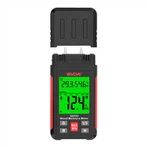How to solve the problem of ripple, harmonic distortion and noise interference caused by the switch mode power supply
Ripple
Ripple: A spurious signal containing periodic and random components attached to a DC level. It refers to the peak value of AC voltage in the output voltage under the rated output voltage and current. Ripple voltage, in a narrow sense, refers to the industrial frequency AC component contained in the output DC voltage.
Noise
Noise: For what is labelled noise in electronic circuits, it can be generalised as a generic term for all signals other than the destination signal. Initially, the electronic signals that cause the noise emitted by audio equipment such as radios were referred to as noise. However, the consequences of some non-purpose electronic signals on electronic circuits are not always related to sound, and thus the concept of noise was gradually expanded. For example, the electronic signals that cause white streaks on the visual screen are also called noise. It is possible to say that all signals in the circuit other than the purpose of the signal, regardless of whether it has an impact on the circuit, can be called noise. For example, ripples or self-excited oscillations in the supply voltage can adversely affect a circuit, causing an ac sound to be emitted from an audio device or causing the circuit to malfunction, but sometimes may not result in these consequences. Any such ripple or oscillation should be referred to as a type of noise in the circuit. There is also a certain frequency of radio wave signals, the need to receive such signals for the receiver, it is the normal purpose of the signal, while the other receiver it is a non-purpose signal, that is, noise. In electronics often use the term interference, sometimes confused with the concept of noise, in fact, there is a difference. Noise is an electronic signal, and interference refers to a certain effect, is due to noise causes an adverse reaction to the circuit. Whereas there is noise in a circuit, there is not necessarily interference. In digital circuits. Often can be observed with an oscilloscope in the normal pulse signal mixed with some small spike pulse is not expected, but a noise. However, due to circuit characteristics, these small spike pulses are not enough to cause the logic of the digital circuit to be affected and confused, so it can be considered that there is no interference.
When a noise voltage is large enough to disturb a circuit, that noise voltage is called an interference voltage. And the maximum noise voltage added to a circuit or a device, when it can still maintain normal operation, is called the interference tolerance or immunity of the circuit or device. Generally speaking, noise is difficult to eliminate, but you can try to reduce the intensity of the noise or improve the immunity of the circuit so that the noise does not form interference.
Harmonics
Harmonics: are the quantities of electricity contained in a current whose frequency is an integer multiple of the fundamental, generally referred to as the Fourier series decomposition of periodic non-sinusoidal quantities of electricity, with the remainder generated by currents greater than the fundamental frequency. In a broad sense, since the effective component of the AC grid is a single frequency of the industrial frequency, any component that differs from the industrial frequency can be called a harmonic.
The reason for harmonics: due to the sinusoidal voltage applied to a non-linear load, when the current flows through the load, the voltage is not linearly related to the voltage applied, and the fundamental current is distorted to form a non-sinusoidal current, i.e., there are harmonics generated in the circuit. The main nonlinear loads are UPS, switching power supply, rectifier, frequency conver ter, inverter and so on.






